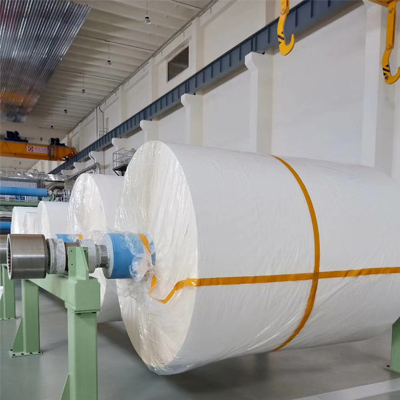- Home
- Duplex Board Manufacturing Process Exporter
Sep . 12, 2024 03:12 Back to list
Duplex Board Manufacturing Process Exporter
Understanding the Duplex Board Manufacturing Process and Its Role in Exporting
Duplex board, a popular choice in the packaging industry, is renowned for its strength, versatility, and eco-friendliness. This type of paperboard is primarily made from recycled materials and is often used for producing boxes, cartons, and various other packaging products. The manufacturing process of duplex board is intricate and involves several crucial steps that contribute to its high quality and market competitiveness, especially in the export sector.
The duplex board manufacturing process begins with the collection of raw materials, predominantly waste paper and recycled fibers. This source material is crucial because it not only reduces environmental impact but also leads to lower production costs. The collected fibers undergo a sorting process where impurities such as plastics, metals, and organic materials are removed. Once cleaned, the paper is subjected to pulping, wherein it is mixed with water and chemicals to break down the fibers into a slurry.
After pulping, the slurry is passed through a series of screens and cleaning apparatus that further refine the mixture, removing any remaining contaminants. The resulting pulp is then blended with additives that enhance properties like brightness, opacity, and strength. These additives can include pigments, fillers, and sizing agents, which are carefully selected based on the desired characteristics of the final product.
The next phase is the forming of the sheet. The pulp is deposited onto a moving wire mesh where water is drained away using vacuum suction, forming a wet sheet. This sheet is then pressed between felt rollers to remove more moisture and improve density. Following the pressing stage, the sheet undergoes a drying process, where it is passed through heated rollers that eliminate the remaining water content, ensuring the board reaches the desired moisture level and interacts optimally with subsequent treatments.
duplex board manufacturing process exporter

After drying, the duplex board is subjected to surface treatments. This may include coating with chemicals to enhance printability and durability. The coating process is vital for ensuring that the board can withstand various environmental factors, protecting the printed designs and contents from damage. Once coated, the board can be calendered, which involves passing it through smooth rollers to achieve a glossy finish and uniform thickness.
Cutting and converting the duplex board into specific sizes and formats come next. This process can also involve printing, where the board is printed with branding, logos, and other designs needed for end-users. Quality control checks are essential throughout the manufacturing process to ensure that the finished product meets industry standards and customer specifications.
Once all these processes are completed, the duplex board is packaged for shipping. As an essential component of the global packaging industry, exporting duplex board has become a lucrative endeavor. Manufacturers can reach international markets, catering to various sectors, including food packaging, electronics, and consumer goods.
In conclusion, the duplex board manufacturing process is a complex but fascinating journey that combines sustainability with advanced technology. Its success in the export market is driven by the growing demand for eco-friendly packaging solutions, making duplex board a vital element in the future of packaging industries worldwide. Through ongoing innovations and efficient production techniques, exporters can continue to meet the needs of diverse customers while contributing to environmental sustainability.
Latest news
-
Removable Contact Paper for Kitchen Cabinets - Durable, Easy to Install, Stylish Designs
NewsJun.24,2025
-
Cupboard Decoration with Paper - Stylish Designs, Custom Sizes & Bulk Supply
NewsJun.10,2025
-
Premium Contact Paper for Table Top - Durable, Easy to Apply, Stylish Surfaces
NewsJun.10,2025
-
Contact Paper to Cover Dresser Durable & Easy Application
NewsJun.10,2025
-
Top Dresser Drawer Contact Paper Suppliers Waterproof & Durable Liner
NewsJun.10,2025
-
Premium Desk Wall Paper Suppliers Export & Manufacture
NewsJun.09,2025

